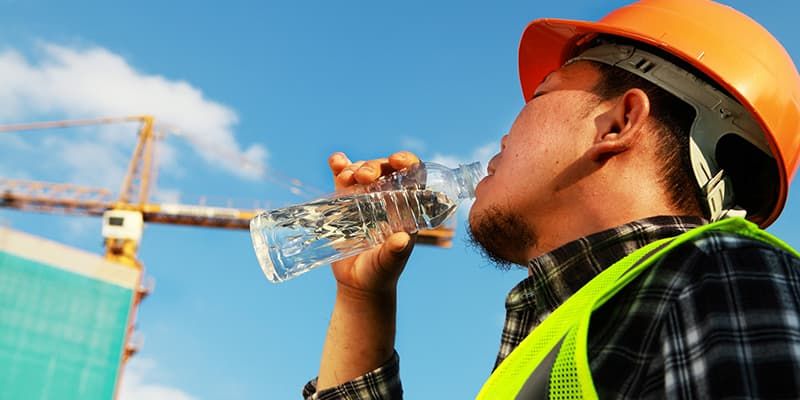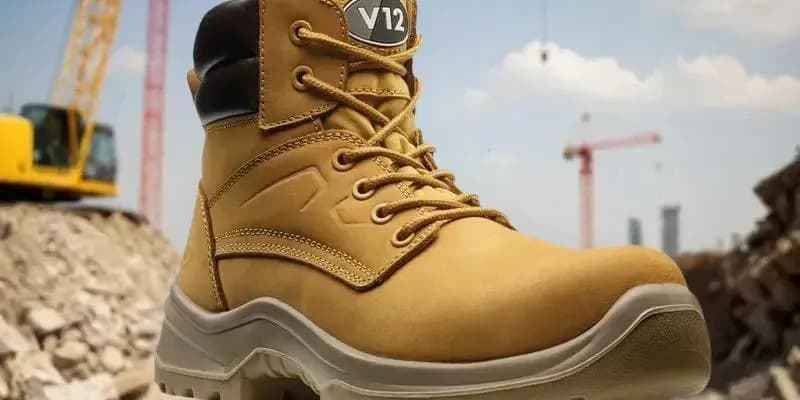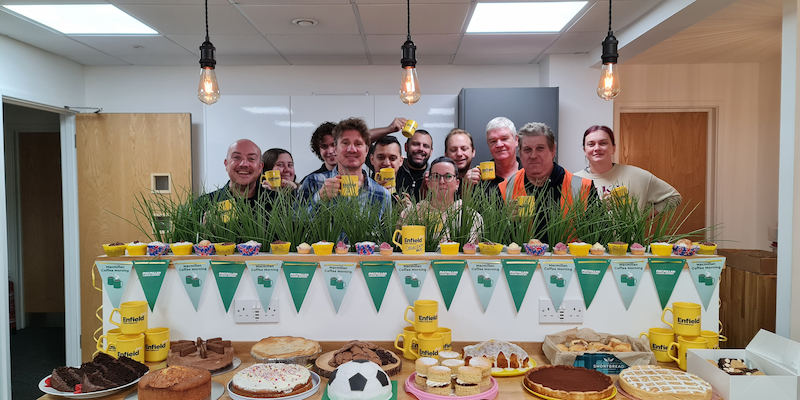
By Mark Smith 10/05/2024
Under: Health and Safety NewsKeeping Your Construction Workers Safe and Cool in Hot Weather
With the UK heating up year-on-year, employers now more than ever need to take into account the potential effects of hot weather on their workforce. It's time to prepare for summer and ensure the safety of your employees in potentially dangerously hot weather.
Relaxing on a sun-drenched beach might be the stuff of dreams, yet toiling away on a construction site under scorching rays can quickly become a health and safety nightmare. Employers are obligated both morally and legally to ensure the well-being and safety of their employees, including when they are working at high temperatures.
The 1974 Health and Safety at Work Act states that all employers have a duty to do whatever is 'reasonably practicable' to protect the health, safety, and well-being of their employees. In April 2022 the Personal Protection Equipment (Amendment) Regulations extended employers’ responsibilities and obligations to provide free PPE equipment beyond employees to include those with a more casual or contract employee relationship.
Construction workers may sustain injuries during the summer months as a result of impaired judgement caused by feeling overheated, dizziness, sweaty and slippery hands, slower response times, fatigue, and muscle cramps. The frequency of heat-related injuries is expected to rise due to the escalating effects of climate change and an ageing construction workforce.
Heat illness prevention
Creating a comprehensive sun protection plan for onsite safety will help protect your team, and their productivity during hot weather. When creating a plan it’s best to consider the following:
- Get an early start and amend schedules to minimise work when the sun is at its strongest. In the UK, this is 11 am-3 pm between March and October.
- Ensure adequate break times in a shaded area where workers can cool down and hydrate.
- Provide shading over work areas wherever possible.
- Supply appropriate PPE including hats, UV-blocking sunglasses and long-sleeved clothing.
- Ensure easy access to well-stocked drinking water stations.
- Insect bites and stings are more common in the summer, therefore keep records of anyone who may need treatment with an epi-pen due to allergic reactions.
- Provide adequate, convenient toilet facilities so workers are not reluctant to drink water and intern remain hydrated.
- Increase the size of the team to minimise heat exposure for each individual.

Know the signs of heat-related illnesses!
Your sun protection strategy will help minimise heat related health risks to your team. These risks include the following:
- Heatstroke has the potential to be deadly or result in long-term impairment. Signs of heatstroke consist of elevated body temperature, parched skin, profuse sweating, headache, disorientation, lack of coordination, seizures, or unconsciousness. If someone is experiencing heatstroke, dial emergency services, relocate them to a shaded spot, and apply cold water to rapidly lower their body temperature, concentrating on the chest, underarms, and groin regions.
- Heat exhaustion occurs when the body becomes severely dehydrated and loses important electrolytes, which can rapidly progress into heat stroke. Signs to watch out for include a fast heartbeat, feeling nauseous, weakness, fatigue, vomiting, irritability, shallow breathing, and an elevated body temperature. It's important to move the affected individual to a shaded area, provide them with cold water, and loosen their clothing. If their condition doesn't improve within 15 minutes, it's crucial to call for medical assistance.
- If workers sweat a lot, they may experience heat cramps and muscle cramps in their legs, arms, or abdomen. To help them feel better, get them out of the sun and suggest they drink clear juice, a sports drink, or water with food. However, if the worker has a history of heart problems, is on a low-sodium diet, or if the cramps last for more than an hour, it's important to seek medical attention.
- Melanoma is the fifth most prevalent type of cancer in the UK. Shockingly, it claims the lives of more than 2,500 individuals annually, and the numbers are still on the rise. However, there is a silver lining. According to Cancer Research UK, a staggering 86% of these cases can be prevented. To combat skin cancer effectively, employers should not only supply protective clothing and sunscreen but also educate their employees about the importance of applying sun cream 30 minutes before going out in the sun and reapplying it every two hours. Stay safe in the sun!
Construction work clothes for hot weather
Construction workers often face extreme temperatures exceeding 40°C while on the job. Our range of products is made from breathable fabrics and designed to reduce the risk of heat stress and protect against UV rays.
One of our most popular items for working in hot weather is our Hi-Vis Polo Shirt. Browse our complete workwear clothing range.
When working outside in the sun it is also important to ensure your eyes are protected against UV rays. Our range of eye protection glasses comes with a different range of features with our Uvex Pheos Safety Spectacles providing UV protection.
Protecting your skin on a construction site
When working outdoors for long periods of time, your skin is exposed to harmful UV rays. To limit the damage caused to your skin is it best practice to always wear safety gloves and to apply sun cream at regular intervals. At Enfield Safety we have developed a sunscreen station for easy access to sun protection. We also supply bulk sun cream suitable for the sunscreen station or smaller individual bottles of factor 30 sun lotion.
Remain well hydrated onsite!
The most common cause of heat exhaustion is dehydration. Even if unaware, dehydration will cause a worker's performance to suffer. It is therefore recommended that construction workers drink one cup of water every 15 to 20 minutes when working in extreme heat.
Caffeine consumption should be limited and cool water stations should be available onsite in convenient locations. Remember to order bottled water for the cool water stations or individual 500ml of spring water.
When the hot summer months set in, remember to prioritise workers' health by implementing these simple measures. It’s paramount to equip your workforce with UV protective clothing, UV safety glasses, and sun cream and by also emphasizing the importance of staying hydrated. All these simple, yet effective implementations will keep staff protected, cool and productive onsite.

 (1).jpg)
